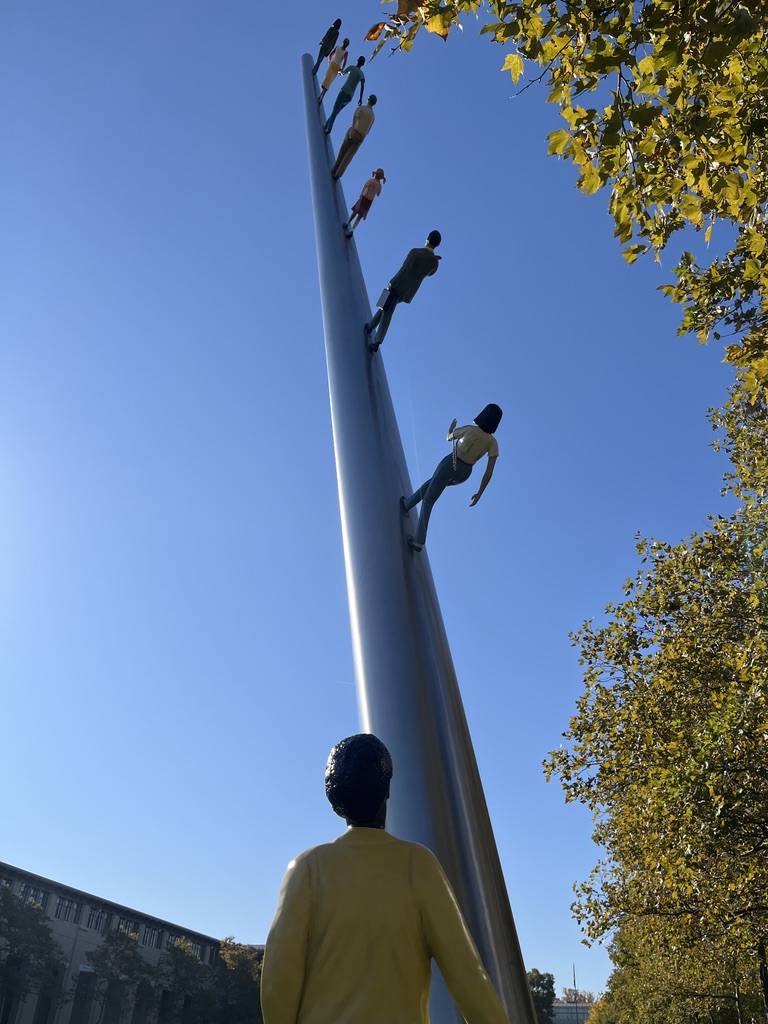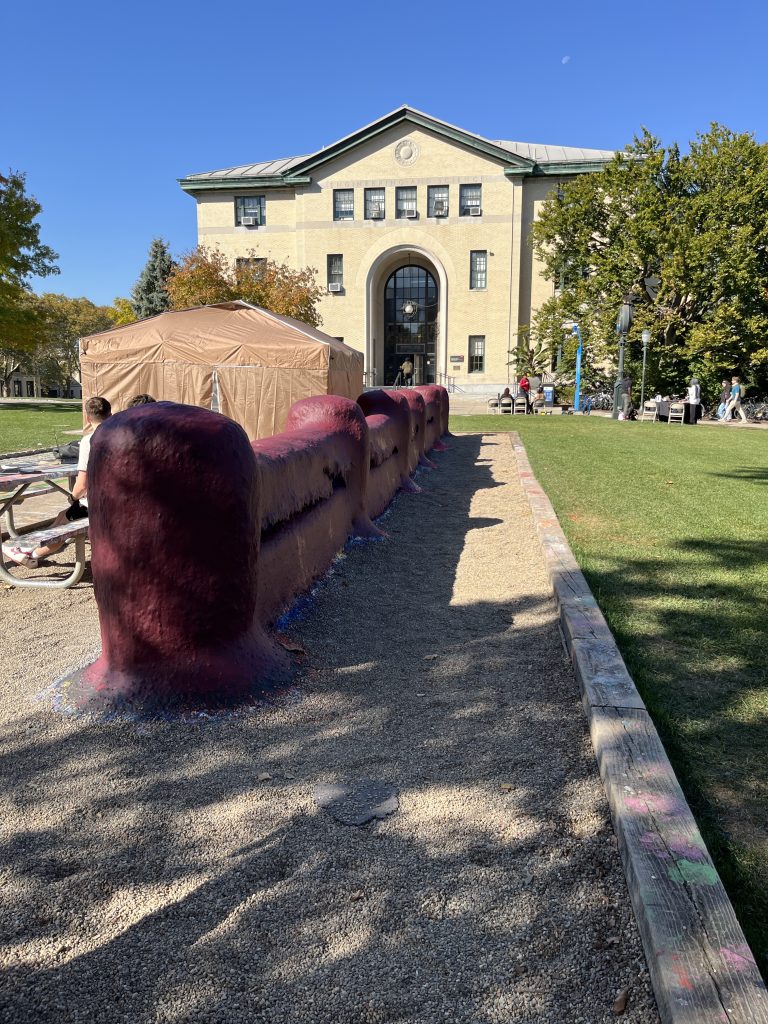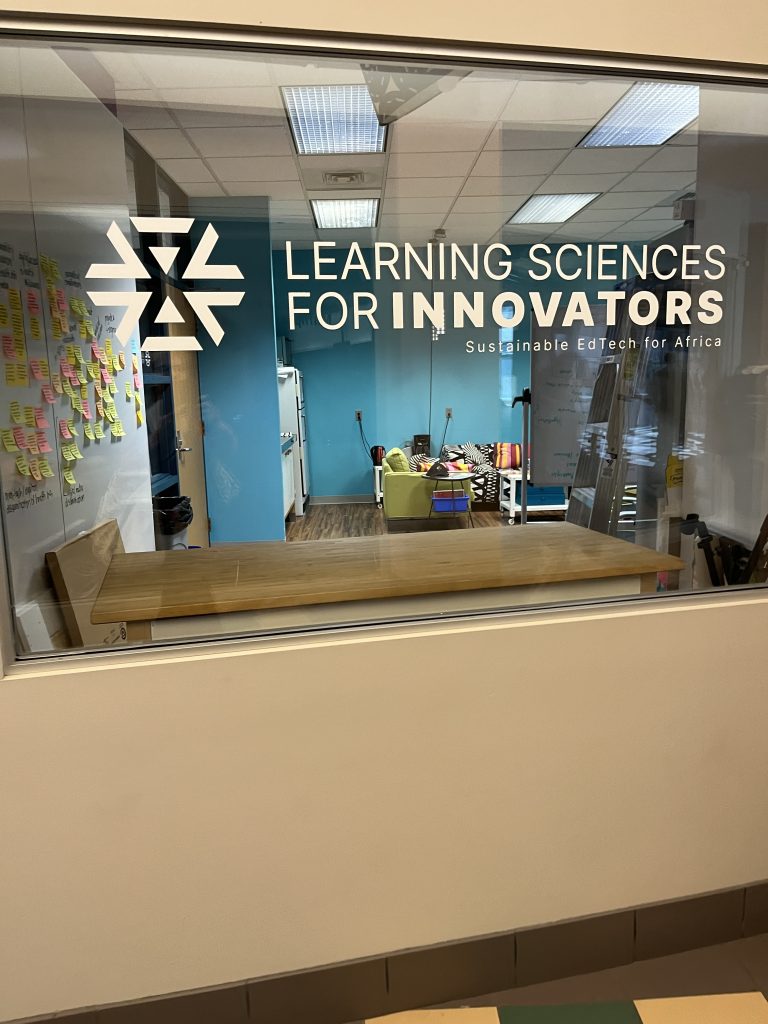Carnegie Mellon aims to use knowledge for good
Fast facts for
Carnegie Mellon University

The sky’s the limit
The first thing I saw when I found the campus of Carnegie Mellon University was a silver pole reaching diagonally about three stories into the sky, with colorized sculptures of men and women walking up it. It’s called Walking to the Sky, and it represents the belief that at Carnegie Mellon, “the sky’s the limit.”
Know what you want
Certainly this uber-selective college gives its students a brag-worthy education. Not only are its STEM programs top-notch, but its College of Fine Arts boasts some of the most prestigious fine arts programs in the world.
Carnegie Mellon is for “scholars, creators, and makers,” according to the website’s home page. Here, STEM undergraduate research with faculty mentors exists alongside artists, architects, actors, and musicians. In some cases, the two intertwine in interdisciplinary discovery. For the most part, students don’t come to CMU to discover their passions; they know what they want to study when they get here.
A true college campus in the midst of a big city
Visiting Carnegie Mellon and Pitt was my introduction to Pittsburgh, and the city was cleaner and prettier than I had expected. Its traffic was every bit as bad as Washington, D.C.’s, and the parking was just as expensive. But Carnegie Mellon, right in the heart of Pittsburgh, has a campus, with green spaces and trees turning shades of red and orange on the perfect October day when I visited with my friend and colleague Dianne Keilholtz. Students sat with computers in the Adirondack chairs placed on the quad. Outside one building, a bronze Scottie dog sculpture has a shiny nose from all the students who have rubbed it for good luck, much the way University of Maryland Terps rub Testudo’s terrapin nose.

Creating community on campus
On tour with a student ambassador, we learned about some of the community-building activities that go on at Carnegie Mellon.
First-year dorms compete against each other for the Carnegie Cup during orientation week.

One tradition left behind a hairy-looking mess of a “fence” that gets painted by clubs. They must reserve the area and then station two club members by the fence for 24 hours. They paint this fence, which is a single length of about 25 feet, with a theme fitting the organization. Paint it all, using only 1920’s technology, or you’ll be accused of vandalism.
Students anticipate the spring carnival, another spirit-building event. Groups build two-story booths; groups also race buggies they make themselves (STEM school) and find their smallest member to drive.
Carnegie Mellon is known for its rigor, but it seems to be working on balancing that with fun on a green campus in a friendly city.
Focus on solving problems for meaningful change
Whether it’s through design, science, business, economics, or another field, every college and school at Carnegie Mellon stresses solving difficult problems, leading to meaningful change. It’s about using knowledge to make life better.

Getting the official word from admissions
I met with Miguel Alvarez, director of access and opportunity in admissions, on October 22 and had the chance to ask him some real counselor-type questions. Here are his answers.
Q: Do you admit students to the major, the college, or the university as a whole?
A: Students do have to apply directly to a college within the university. Those interested in the Fine Arts will need to apply directly to the School of their interest within the college (Drama, Music, Art, Design, Architecture) .
Students applying to the College of Engineering are admitted directly to a major or, in the case of Civil & Environmental Engineering, a department. Students who are accepted to Civil & Environmental Engineering will declare either Civil Engineering or Environmental Engineering at the end of the fall semester of their first year. Requests to change major will be considered after the first year, but are not guaranteed to be approved and will be evaluated on a case-by-case basis.
Students admitted as undecided within the College of Engineering are allowed to choose among the primary majors during the spring semester of their first year. In the spring of their first year, all students will also have the opportunity to declare an additional major from among Biomedical Engineering; Engineering and Public Policy; Engineering, Design, Innovation, and Entrepreneurship; and Engineering and Fine Arts.
Q: Do the colleges have differing admission rates?
A: When students apply for admission to a specific program or college, they will be evaluated for that specific program or college. Yes, selectivity can be different depending on what program a student is applying to but across the board we are a highly selective University.
Q: What are the programs and Colleges that comprise the university?
A: Schools and colleges:
College of Engineering
College of Fine Arts*
- Art, Architecture, Design, Drama, Music
Dietrich College of Humanities and Social Sciences
Mellon College of Sciences
School of Computer Sciences
Tepper School of Business
Information Systems
*If you’re applying to one of the fine arts programs, your artistic performance will be the main factor in the admission decision.
Q: What is Carnegie Mellon’s test policy?
A: Carnegie Mellon University will be test optional for fall 2025 undergraduate admission applications. However, students applying to the School of Computer Science are strongly encouraged to submit either an SAT or ACT score, including the math subscore, to bolster their application’s strength and to aid in determining their ability to succeed academically at Carnegie Mellon.
Pursuant to this policy, applicants aren’t required to submit SAT or ACT results; however, results will be considered for those who submit them and want us to consider them.
For Fall 2026 applicants, Carnegie Mellon will implement an undergraduate admission test policy that varies according to college or program:
- The School of Computer Science will require an SAT or an ACT score.
- The following colleges and programs will move to a test flexible policy:
- College of Engineering
- Dietrich College of Humanities and Social Sciences
- Heinz College’s Information Systems program
- Mellon College of Science
- Tepper School of Business
- Test-flexible means that students are required to submit test scores in order to complete their application; however, they may choose which type of test(s) they prefer to submit. Acceptable test options include the SAT, ACT, International Baccalaureate exam, Advanced Placement, Cambridge A-Levels and the French Baccalaureate.
- The College of Fine Arts will remain test optional and continue to require portfolios or auditions.
Q: Calc or stat?
A: Advanced math courses like calculus are strongly encouraged. Stats is a great high level course but students are encouraged to take Calc especially for many of our STEM-oriented majors. We list a pretty good breakdown of what we encourage students to take by college.
Q: What percentage of the freshman class comes in through Early Decision?
A: Carnegie Mellon admits most of their class via the Regular Decision Process. In previous years, we have been around 30%- 35% or so of our class via the Early Decision Process.
Note from KH: According to the Common Data Set, ED was 36% of overall admits in 2023-24. CMU’s Early Decision acceptance rate is about 14%, while the Regular Decision acceptance rate is about 11%.
Q: What kind of student thrives at Carnegie Mellon?
A: Successful students at Carnegie Mellon have a strong passion for what they want to study; they want to learn their craft and apply it in the world; they want to maximize the opportunities CMU provides at the undergraduate level (including research for undergraduates); they have interests outside of the classroom and feel that strong commitment to community. (Note that 65% live on campus.)
Q: What are you looking for when reading an application?
A: We truly evaluate applications in a holistic way. No one item of information is going to make or break the decision for an application. Rather, we’re in a highly selective process so we’re going to look at the entire application and select the students that are the right fit and contribute to our campus community. We will evaluate both the academic and non-academic information the student provides in their application. Both areas are important in a highly selective application process. We encourage students to challenge themselves as much as possible in the classroom based on what they have available. We also hope to learn about the interests, experiences, perspectives, and ideas students highlight in their application in order to understand how they will add to the campus community.
Note from KH: The Common Data Set (C7) indicates that the following are considered VERY IMPORTANT: rigor, GPA, class rank, extracurriculars, volunteering, character/personal traits. These are considered IMPORTANT: essay, recommendation, talent/ability, first generation.
Q: What are you doing about the reported high levels of stress here?
A: CMU has allocated more resources for health and well-being and centralized the Student Academic Success Center on campus. They provide one-to-one academic coaching, and individual colleges provide additional support. They foster an atmosphere of collaboration and have ongoing conversations about how to support student well being and success. Also, weekly therapy dogs with Paws to Relax in the Mindfulness Room! https://www.cmu.edu/wellbeing/resources/therapy.html
Q: Could you explain the BXA program?
A: Students interested in either the Bachelor of Humanities and Arts (BHA), Bachelor of Science and Arts (BSA) or Bachelor of Computer Science and Arts (BCSA) need to apply and be admitted to a school within the College of Fine Arts and be admissible to the corresponding academic college (Dietrich College of Humanities and Social Sciences, Mellon College of Science, or School of Computer Science).
BXA is an interdisciplinary degree for students who want to combine an arts major with a technical one. According to cmu.edu, “The X in BXA is the intersection of disciplines, innovation and curiosity. The X is the variable that changes depending on the academic unit a student integrates with their College of Fine Arts concentration.” BXA is the umbrella term for five specific programs: BCSA, BESA, BHA, BSA, EA.
BCSA: Bachelor of Computer Science and Arts
BESA: Bachelor of Engineering Studies and Arts
BHA: Bachelor of Humanities and Arts
BSA: Bachelor of Science and Arts
EA: Engineering and Arts
To be considered for the BXA programs, you’ll first select the College of Fine Arts school that you wish to apply to. You’ll then be asked if you’re interested in a BXA program and note your interest in either the Bachelor of Computer Science and Arts (BCSA), Bachelor of Engineering Studies and Arts (BESA), Bachelor of Humanities and Arts (BHA) or Bachelor of Science and Arts (BSA).
Note that BXA applicants are only reviewed for the College of Fine Arts (CFA.) If you indicate interest in the BXA program, you will not be reviewed for a second college/program outside of your CFA choice. The intercollege BXA offerings are designed for students who’d like to combine or juxtapose their interests in the arts and another academic program. Students must meet the admission standards of their academic choice and complete the specific application requirements for their CFA focus (portfolio review, pre-screen, audition or interview).
Indicating interest does not mean your offer of admission will include acceptance to one of our BXA programs. Notification of BXA admission will follow your initial offer.
——————-End of Q & A with Miguel Alvarez————————————–